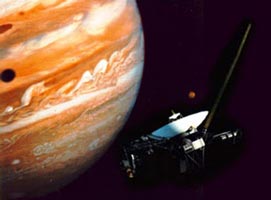No one can definitively say when the discovery of Jupiter took place nor who discovered it. Why is it so hard? It is one of the five planets that can be seen in the night sky. Only Venus and the Moon are brighter. Frankly, it is nearly impossible to miss. NASA lists the planet as having been discovered by the Ancients. The planet is called Marduk in ancient Babylonian texts, Zeus in early Greek manuscripts, and Jupiter in Roman antiquity.
What is known are some of the firsts in the exploration of Jupiter. In 1610, Galileo Galilei turned his rudimentary telescope on Jupiter, and realized that it had 4 large moons orbiting it: Io, Europa, Ganymede and Callisto. This was an important discovery, because it demonstrated that Earth was not the center of the Universe as proponents of the geocentric view believed.
In the1660s, Giovanni Cassini used his telescope to discover spots and bands across the surface of Jupiter, and was able to estimate the planet’s rotational period. He is thought to be the first to observe the planet’s Great Red Spot, a giant storm that is still raging. Imagine a single storm that rages for over 450 years and is larger than the Earth.
The first spacecraft to visit Jupiter up close was NASA’s Pioneer 10 in 1973. That mission was closely followed by Pioneer 11 in 1974. Both of NASA’s Voyager spacecraft flew past in 1979, sending back many of the famous pictures we’re all familiar with. Since then, the Ulysses solar probe, NASA’s Cassini spacecraft and New Horizons have all made flybys of the planet.
The only spacecraft to actually orbit Jupiter was NASA’s Galileo mission, which went into orbit in 1995. NASA scientists were not satisfied with a few orbits of Jupiter. They wanted to see a bit more of the Jovian system, so Galileo was sent to observe a few moons. Galileo is credited as being the first spacecraft to observe a comet hitting a planet(Jupiter), first to flyby an asteroid, first to discover an asteroid with a moon, and it was the first to measure the crushing atmospheric pressure of Jupiter with a descent probe. The mission discovered evidence of subsurface saltwater on Europa, Ganymede and Callisto and revealed the intensity of the volcanic activity on Io.
We may not know the exact date of the discovery of Jupiter, but we know many first about the planet. Even now, scientists are planning the next mission and hoping to be the first to discover something about the Jovian system.
Here are some images of the Jupiter flyby from NASA’s New Horizons spacecraft, and an article about Cassini’s flyby of Jupiter.
Here’s the archived page for NASA’s Galileo mission to Jupiter, and information about the Voyager mission’s images of Jupiter.
We’ve also recorded an entire show just on Jupiter for Astronomy Cast. Listen to it here, Episode 56: Jupiter, and Episode 57: Jupiter’s Moons.
Sources:
http://solarsystem.nasa.gov/planets/profile.cfm?Object=Jupiter&Display=Facts
http://solarsystem.nasa.gov/galileo/

